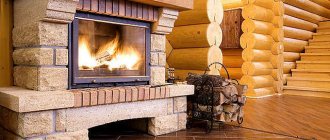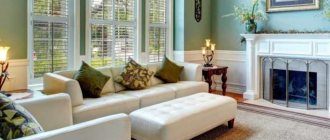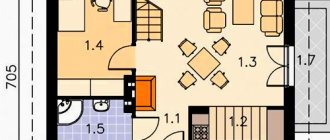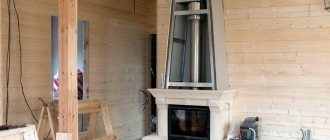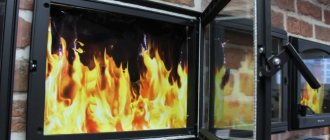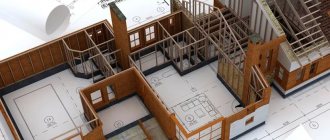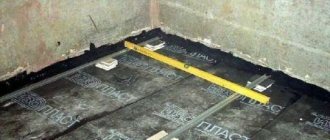Published: 10/19/2013 Category: Materials and technologies, Construction Views: 3422
It is allowed to install a fireplace in the apartment only with a closed firebox.
Installing a wood-burning fireplace in an apartment
Installing a fireplace in an apartment is more difficult (and sometimes even impossible) than in an individual house. The reason is that many apartment buildings were built without taking into account the installation of chimneys.
The only exceptions are three options:
- the last floor of a high-rise building;
- any of the floors of a two-story house (in this case, as in the previous one, it is possible to make an internal chimney yourself);
- a high-rise building in which a collective chimney is provided, allowing the installation of a fireplace in each of the apartments.
In all three cases, before starting work, you must obtain permission to install the fireplace. First, contact the fire department. A specialist from the organization will go to the site to check the condition of the chimney and whether it meets fire safety requirements. The cost of the examination is from 1000 rubles.
Then contact a construction expert, who will issue an opinion on whether the ceilings will withstand the weight of the fireplace. The examination will also develop a project for installing a fireplace (cost - from 6,000 rubles). The prepared project, technical passport and title document must be submitted to the housing and communal services department of the district administration, whose non-departmental commission will issue permission to install a fireplace.
In an apartment in a multi-storey building, you can install a fireplace weighing up to 700 kg and only with a closed firebox. In this case, the area of the room must be at least 20 square meters to ensure proper air exchange.
Fireplace installation should be entrusted to fireplace specialists. They will be able to take into account a lot of specific points. In particular, during installation it is important to ensure air flow by providing a technological gap in the fireplace design. It is necessary to maintain a distance between the firebox and the wall so that it does not overheat during operation and burst. In case of incorrect installation, the warranty for the firebox does not apply. It must be remembered that any chimney, regardless of material, needs regular maintenance. A specialist must be invited 2 times a year: at the beginning and at the end of the heating season. Soot accumulated on the walls of the chimney impairs draft and over time destroys the material, since it is an aggressive substance.
Construction device
The main parts of the fireplace are the firebox and chimney.
The main functional parts are the firebox and chimney. There are also other important components:
- heating device;
- valve;
- ash pan;
- lining;
- grate;
- forced convection system;
- safety doors;
- fire cutter.
The external device consists of a cladding and a portal. The latter serves for decoration and maintaining a certain style of the room.
Installation of the fireplace can be done using separate parts purchased in the store, or you can create it yourself from the necessary building materials. An industrial firebox is usually made of cast iron or steel. Do-it-yourself masonry is possible using refractory bricks.
Installing a fireplace in a private house
Installing a fireplace in a private house, from the point of view of permitting documentation, is much simpler. There are no regulatory documents as such. The only thing that needs to be taken into account are recommendations on the arrangement and condition of the chimney and the weight of the structure.
The location of the fireplace must be determined at the design stage of the house. Depending on the size of the room in which it will stand and its purpose (whether it will be used for heating or have a decorative role), the size and power of the firebox are selected. The parameters of the chimney depend on these values. As a rule, today, ready-made closed fireboxes are purchased for fireplaces, on which manufacturers always indicate the recommended size of the chimney cross-section. If the chimney does not correspond to it, the fireplace will smoke during operation.
Heating unit with live fire
Wood-burning fireplace in a modern apartment
This device is designed for heating rooms using ordinary firewood. In this case, it is imperative to equip the chimney and reliable insulation of structures around the unit.
When installing such heating devices, you must obtain special permission from the relevant authorities. This can be done on the top floor of a building or in old houses where there is already a ventilation duct for smoke intake. The fireboxes of these units can be made of either brick (if the ceiling is designed for such heavy loads) or metal.
If desired, even in an apartment building, you can install a heating device that will resemble a classic fireplace insert with many of its functions.
[ads-pc-2][ads-mob-2]
Which chimney is better?
Chimneys differ not only in size and cross-sectional shape, but also in materials.
Chimneys for stoves and fireplaces
Brick chimney
Traditionally, red solid bricks are used to build a chimney. It is strictly forbidden to work with cheaper material - sand-lime brick - such a chimney will burst at the first fire. Red brick is strong, fire-resistant and durable; with high-quality masonry, it serves as well as a building - about 150 years. But the chimney made from it has an inconvenient square shape. As the smoke rises in a spiral, cold air currents appear in the corners of the structure. This leads to condensation and accumulation of soot in the corners, which destroys the material.
Project of a brick chimney in a multi-storey building | Project of a brick chimney in a multi-storey building | Project of a brick chimney in a multi-storey building |
Another significant drawback is the complexity of installation. It is extremely difficult to build a brick chimney with perfectly even and smooth walls. The work takes a long time and is the most expensive. The cost of laying a chimney is from 30 rubles. per brick.
Older houses are usually equipped with a brick chimney. Before installing a fireplace, you need to invite a fire inspector, who will determine its condition, whether it requires repair or not. If you are not satisfied with the location of the chimney, you can lay a new internal one nearby or install an external one, which is attached to the wall of the house. To ensure good draft for the fireplace, the chimney height must be at least 4 m.
Steel chimney
A more modern and convenient option is a steel chimney. Thanks to its round cross-section, smoke rises evenly through it without lingering. Thanks to the two-layer insulation, condensation does not form on the inner surface of the chimney. The material is lightweight, resistant to high temperatures, corrosion, durable and simple, mounted on brackets. One person can handle its installation. In terms of the cost of materials, it is somewhat more expensive than brick, but it benefits from installation. Often, in order to improve the performance characteristics of brick chimneys, a steel insert with a circular cross-section is placed inside. In this case, the role of insulation is performed by brick walls. The service life of a steel chimney is 15 years. The cost of a steel chimney is 17,000 (diameter -150 mm, length - 4m). Installation - 15,000 rubles.
Steel chimney
Ceramic chimney
The best and most reliable type of chimney is ceramic. This is a multi-layer design. A round ceramic pipe is placed in a separate block of expanded clay, between which a layer of basalt insulation is laid. The chimney is assembled from elements held together with glue. Fireclay construction, unlike brick and steel, which can be ordered in any section, is produced in strictly established sizes - from 12 to 20 cm. Manufacturers provide a guarantee on the material for at least 30 years. The cost of a ceramic chimney is 24,600 rubles. (diameter -140 mm, length - 5 m). Installation - 15,000 rubles.
Ceramic chimney Effe2 Domus | Ceramic chimney Effe2 Domus | Ceramic chimney Effe2 Domus |
Fuel selection
All modern fireplaces are divided into two large categories:
- Wood-burning . Traditional classics: the soft dance of fire, the entourage crackling of logs - when a fireplace is mentioned, what usually comes to mind is the wood comfortably burning in the hearth. However, such models have two important disadvantages: firstly, you will need a lot of space to store fuel, and secondly, when burned, wood emits harmful substances. Even with the best insulation of the fireplace, some of them will still find their way into the room;
- Gas . More modern models: fireproof, easy to use and convenient. A practical choice for practical people.
Having decided on the fireplace model, start filling out the paperwork.
Fireplace insert
There are fireplaces with open and closed fireboxes. The first option (without doors) can be built on site using fire bricks. This is always a very heavy structure. The smallest classic fireplace weighs on average 700 - 1000 kg. For this reason, its installation requires additional reinforcement of the floors, and a separate foundation is made at the site where the fireplace is installed. If there are wooden floors, take into account that at the place where the fireplace is installed, the beams must have a cross-section of 300 x 300 mm. As an alternative, you can purchase a ready-made cast iron and steel open firebox. It is much lighter in weight, but otherwise no different from brick.
Closed fireplace insert | Fireplace with closed firebox |
The disadvantage of open fireboxes is their very low efficiency, only 15%. For this reason, an open fireplace cannot be considered as a heating device, but only serves an aesthetic purpose. A closed firebox is much more functional. The fireplace equipped with it is a complete heating system and is capable of heating a two-story, medium-sized house. In this case, pipeline channels (steel or aluminum pipes) are connected to the chimney, supplying warm air to the rooms. Ready-made fireboxes vary in power. The efficiency of a closed fireplace is 85%. Minimum power - 5 kW. One kilowatt is enough to heat 10 sq.m.
Another advantage of a closed firebox design is safety. You don’t need to constantly monitor it - just close the glass door. With an open fireplace, you need to wait until the wood burns out. Do not pour water over logs. The floor around an open fireplace within a radius of 0.5 m must be covered with non-flammable material - tiles, stone or tin.
These articles may also be of interest to you:
- Tiled fireplaces and stoves in Russian style
- Installation of a stove-fireplace in the country
- DIY fireplace installation
- How to clean smoked fireplace glass?
False fireplace or imitation fireplace, what to choose?
Laying a real fireplace is an expensive pleasure, not available to owners of standard apartments, especially in panel houses, due to the increased load. The solution in this case could be a false fireplace that runs on electricity and simulates the burning of a flame. At the same time, you will not have problems with the delivery of firewood, smoke, soot, and you will not have to coordinate this work with anyone. A modern electric fireplace looks quite natural; the main thing is to make a suitable frame, or portal. It is most often made from available material - plasterboard, mounted on a profile frame, and then finished to your taste.
